Every year in the U.S., tire-related crashes cause 200 fatalities, according to the National Highway Traffic Safety Administration. Thankfully, it’s easy to monitor your tires, and how to tell if you need new tires, with a quick video and some basic information.
The primary functions of the tread on your tires are to grip the road and to divert water that causes hydroplaning. Tires with plenty of tread can help you maintain control and reduce your chances of getting a flat. With a quick monthly check of your tread and tire pressure, you’ll know if you need to replace your tires.
Tread wear bars are small, raised bits of rubber that run between the tread blocks. As these bars become even with the top of the tread, it is likely time for new tires. See more about tread wear bars below.
Tires will wear down over time, even if you don’t drive much. Sunlight, heat, and chemicals used to melt snow and ice can reduce rubber flexibility, causing tires to crack, lose air, and eventually fail.
There are many factors that may cause uneven wear, which could shorten the life of your tires. Vehicle alignment, tire pressure, lack of rotation, and/or worn steering and suspension components can all contribute to this problem. To prolong the life of your tires and reduce uneven wear, consider getting them rotated at consistent intervals. At Les Schwab, we recommend getting them rotated every 5,000 milles. The pros at Les Schwab will also conduct a free visual inspection of your steering and suspension components. Schedule your free, pre-trip safety check today.
All tires deflate slowly over time, usually about 1 PSI (pounds per square inch) per month. Check yours monthly to keep them properly inflated. If your tires continually lose air or seem to completely deflate without warning, you may need to stop by Les Schwab for tire repair or replacement if necessary. Does the TPMS (Tire Pressure Monitoring System) light often appear on your dash? This could mean your tires have developed a slow, continuous leak.
Check yours monthly to keep them properly inflated. If your tires continually lose air or seem to completely deflate without warning, you may need to stop by Les Schwab for tire repair or replacement if necessary. Does the TPMS (Tire Pressure Monitoring System) light often appear on your dash? This could mean your tires have developed a slow, continuous leak.
If you hit a curb, pothole or other obstacle, your tires can develop sidewall bulges due to a break of the inner liner. These bulges can rupture causing a potentially unsafe situation. If you spot a bulge on your tires, get to your nearby Les Schwab and have your tires inspected.
If you experience new vibrations or thumping while driving, it could be a sign that one of your tire/wheel assemblies is out of balance. It could also indicate a suspension issue. Stop by your local Les Schwab and our professionals will check your tires, steering, and suspension.
All tires sold in the United States today have what are called tread wear bars.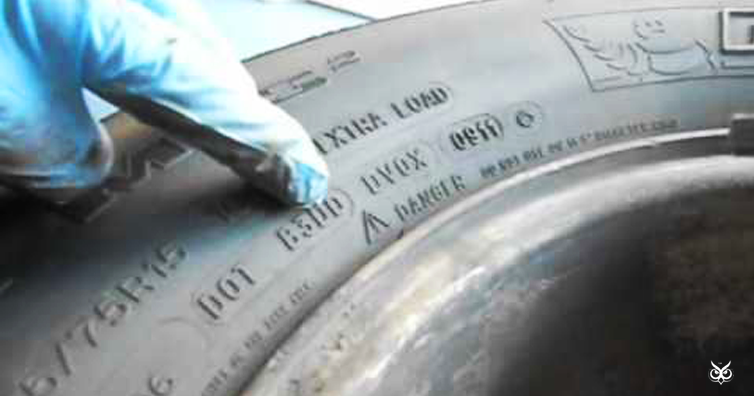 The tread wear bars on your tires are there to help you see how much tread you still have. These wear bars are small, raised bars of rubber in the grooves of your tire. Look at the tread pattern and you’ll see these bars running between the tread blocks.
The tread wear bars on your tires are there to help you see how much tread you still have. These wear bars are small, raised bars of rubber in the grooves of your tire. Look at the tread pattern and you’ll see these bars running between the tread blocks.
Look at the tread pattern and you’ll see these bars running between the tread blocks. As your tires wear, these bars will become increasingly flush with the tire’s tread. It’s important to replace your tires before this happens.
Depending on where and how you drive, and the conditions you face on the road, you might consider getting new tires before they reach that point. City driving in mild conditions may allow you to wait until the tread is closer to the tread wear bar before replacing your tires. More adverse conditions, such as rain, snow, and unpaved roads, may require you to replace your tires earlier.
An easy way to check the tread on your tires is to do the penny test.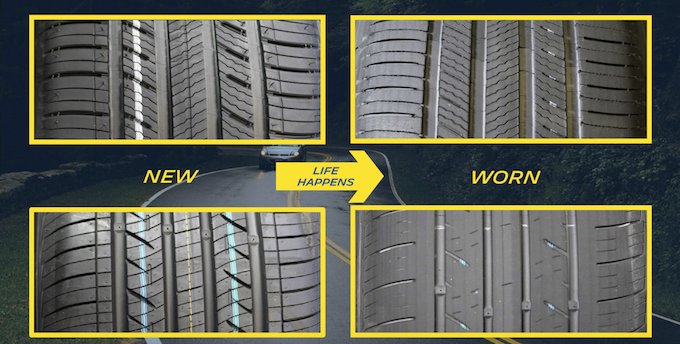 Take a penny and place Lincoln’s head in one of the grooves of the tire tread. If you can see all of Lincoln’s head, it’s time to replace the tire.
Take a penny and place Lincoln’s head in one of the grooves of the tire tread. If you can see all of Lincoln’s head, it’s time to replace the tire.
If the penny goes in enough that the tire tread is at least as deep as Lincoln’s forehead, your tires are generally considered safe and do not need replacing. Check all four of your tires when conducting the penny test.
You’ll find your next set of tires at Les Schwab. You also find our world-class customer service at a tire shop near you that cares about your safety on the road.
SHOP TIRES
Calculate Out-The-Door Price
close
It's all about your safety. With good treads, your car will drive better on the road. When tire treads are worn, your vehicle may be unable to handle weather conditions like rain and snow. Worn treads can also make other parts of your car wear down faster. And remember - having insufficient tread is considered illegal in many states, so please check your tire tread regularly!
Worn treads can also make other parts of your car wear down faster. And remember - having insufficient tread is considered illegal in many states, so please check your tire tread regularly!
With President Lincoln's head pointed down, insert a penny into the grooves on your tire tread. If any part of Lincoln's head is hidden by the tire tread, your tires are fine. Otherwise, your treads are too shallow and it's time to replace your tires.
Regardless of tread wear, many vehicle manufacturers generally recommend that you replace your tires after six years. Most tire manufacturers recommend that you replace your tires at 10 years. Check the manufacturer’s recommendations on your specific tires.
Exposure to heat and the sun’s ultraviolet rays may cause structural changes to your tires. Actually, any extreme weather conditions — from cold temperatures, ice and snow to heat — can combine with rocks, potholes and road conditions to wear down and damage your tires.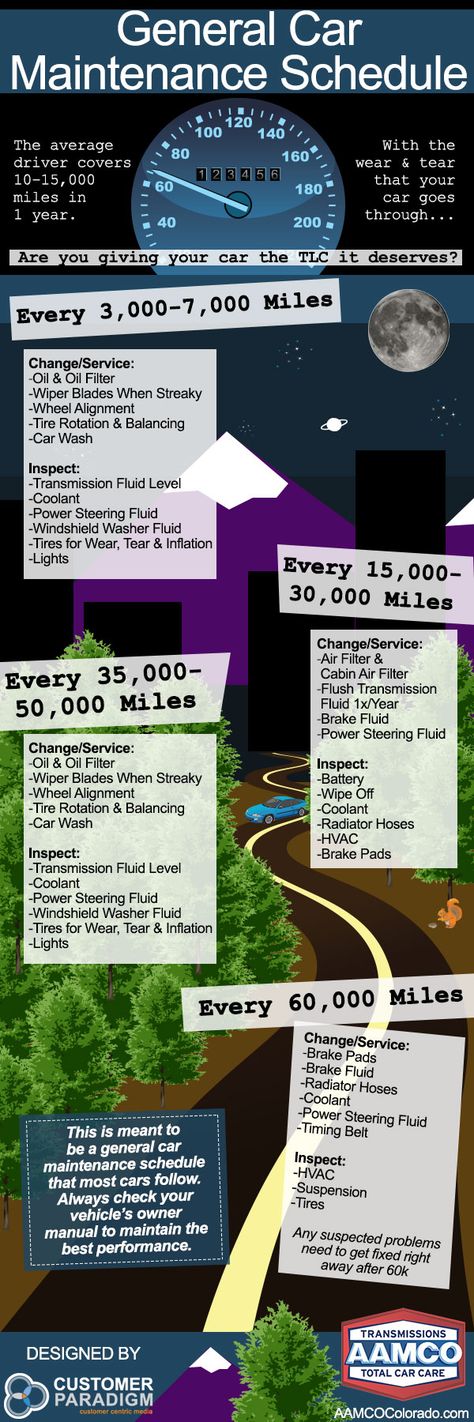 That’s why we make sure to help you choose the right tire for your climate and season.
That’s why we make sure to help you choose the right tire for your climate and season.
When it’s time to buy new tires, we want to make your experience as simple and smooth as possible. We have an extensive selection of quality tires to fit your vehicle, your budget and your driving style. You’ll find everything from economy to ultra–high performance tires, in the size you need, from brands you trust — including our popular Bridgestone and Firestone brands. Find the tires you need – you can start right here.
Shop Tires Now +
{{storeNumber}}
{{storeName}}
{{link-icon "Call Us" mobileCallLink null "call-cta"}} {{link-icon "Directions" directions "_blank" "directions-cta"}}
{{address}}
{{city}}, {{state}} {{zip}}
{{#if activeFlag}} {{#ifCond mystore "or" myPreferredStore}} {{#ifCond storeType 'eq' "TPL"}}
*Call store for appointment {{phone}}
{{else}} {{#if onlineAppointmentActiveFlag }}
{{#if myPreferredStore}}
{{else}}
*Call store for appointment {{phone}}
{{/if}} {{/ifCond}} {{else}} {{#ifCond storeType 'eq' "TPL"}}
*Call store for appointment {{phone}}
{{else}}
Schedule Appointment {{#if onlineAppointmentActiveFlag}} {{else}}
*Call store for appointment {{phone}}
{{/if}}
{{/ifCond}} {{/ifCond}} {{else}}
*Temporarily Closed Due To: {{temporarilyClosedReason}}
{{/if}} {{#if isMilitaryStore}}
*This location is on an active US military base.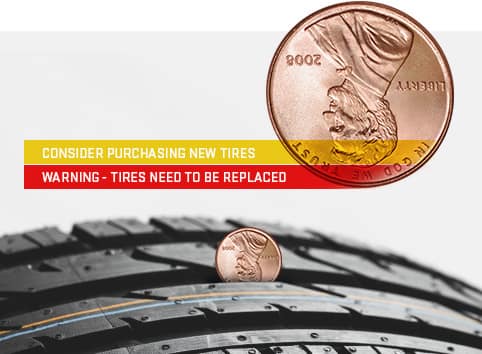 You may need military ID to access the location.
You may need military ID to access the location.
{{/if}}
{{#ifCond count 'eq' "3"}} Show More Stores {{/ifCond}}
Tires are not the first freshness. As absurd as it may sound, the question of the release date of tires worries some buyers. In garages and tire shops, they answer the question in completely different ways - does the year of rubber production affect the quality of the tire? To be honest, probably not. Let's figure it out.
How to determine the year of manufacture of rubber? The manufacturer indicates the week and year of manufacture on the tire on the inner circle near the bead ring. 4 numbers in an oval - what we are looking for. For example, 4317 means that the tires left the assembly line in week 43 of 2017. It turns out, around October. In accordance with standards and common sense, you can absolutely safely buy new tires that were released 3-4 years ago. The manufacturer sets a warranty period. Usually it is 5 years. The service life can be much longer.
It turns out, around October. In accordance with standards and common sense, you can absolutely safely buy new tires that were released 3-4 years ago. The manufacturer sets a warranty period. Usually it is 5 years. The service life can be much longer.
Yes, many tire manufacturers have tested new tires on par with 3 year olds at their test centers. Michelin's 2018 study received the biggest response. Rubber was tested in Asia, Europe and proved that new and three-year tires are one and the same. The result of the experiment was the advertising campaign “Tyres are not bananas” and the conclusions: three-year-old tires from the warehouse are no different from new ones, and the real life of high-quality tires is up to 10 years from the date of production.
Right. And in their research, Michelin experts spoke only about their tires, subject to strict adherence to the rules for long-term storage. In our country, everyone is guided by the norms and recommendations of GOST. It regulates the period during which the manifestation of defects is excluded - 5 years. During this period, they are considered new and are subject to sale in the usual manner.
In our country, everyone is guided by the norms and recommendations of GOST. It regulates the period during which the manifestation of defects is excluded - 5 years. During this period, they are considered new and are subject to sale in the usual manner.
A visual inspection is sufficient for this. For example, you decide to buy tires in Yekaterinburg or Nizhny Tagil. And you are offered four-year tires, explaining this by the total supply of such a batch to the Urals. Examine each carefully. The main beacons are surface integrity and color.
1. Exclude the presence of microcracks, even single ones - this is an indicator that the rubber has begun to dry for some reason.
2. The color of the tires should be a rich black, without whitish streaks and faded areas.
3. If you really want to, you can try on the wheel at the tire shop at the store. Rubber should remain intact, not give microcracks and require standard balancing.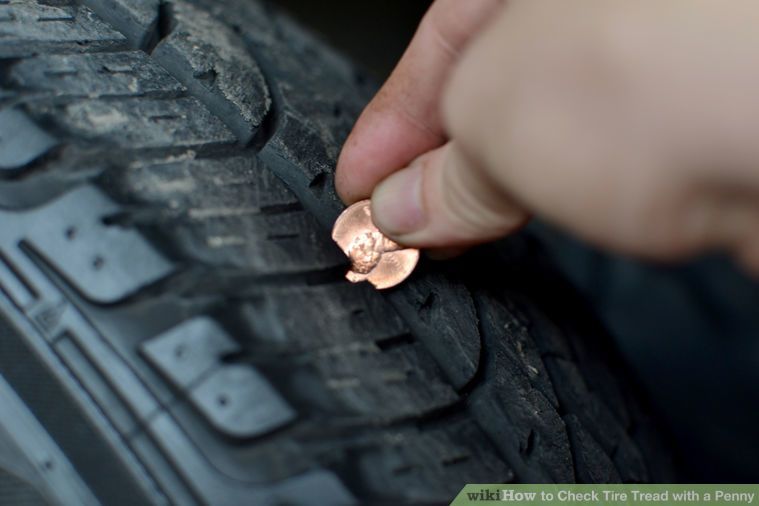
In 99 cases out of 100, this will be the case. A quality tire may not show signs of aging after 5 years of proper storage. This is only possible with manufacturing defects.
No one has done exact research, but marketing is most likely to blame. In order to stimulate sales of new tires, it is logical to convince the client that it is dangerous to ride on old tires.
Yes. The warranty period of 5 years is the period in which the manufacturer assumes responsibility for possible defects. Moreover, it is calculated with a margin - with the expectation of active operation in a constant mode in difficult road conditions. The actual service life is much higher. We are also given a 3-month warranty for shoes, but we wear high-quality models for several seasons and do not know anything about the release date.
If you remember about the Urals again, then you will also use tires in the summer-winter shift mode, that is, with breaks. Our catalog contains all the leaders of the tire market. Therefore, you can buy rubber in Yekaterinburg and other large cities of the Ural Federal District directly from the manufacturer and be sure of its quality.
Our catalog contains all the leaders of the tire market. Therefore, you can buy rubber in Yekaterinburg and other large cities of the Ural Federal District directly from the manufacturer and be sure of its quality.
Tires have been the most important element of car safety for over 100 years. After all, they are the car's only contact with the road. Even the most powerful engine, the most powerful brakes and the most advanced anti-skid system depend on tire grip. Therefore, it is very correct to buy rubber.
Thus, if a consumer has tires that are worn, under-inflated or unsuitable for the environment, he puts himself, his car and other people at risk. But most drivers don't know enough about tires to make a wise purchase. For some, the choice comes down to price and availability. Others buy tires based on looks or reputation.
© shutterstock Simply put, a tire is a flexible container of compressed air.
Modern tires are made up of 19-25 different components. Tires are made from the inside out, not the outside in. The heart of every tire is the inner layer. Its task is to give the tire shape and retain air.
Fabric straps wrapped around inner liner. The bead attaches to the bottom of the fabric straps and holds the tire to the wheel.
Each passenger car and light truck tire has an alphanumeric code on the sidewall that describes the size of the tire. For most tires, this code begins with the letter "P". Some may start with the letter "LT", meaning light truck.
Some tires may have a maximum load rating. When selecting new tires, it is important to ensure that the tire's load rating is not lower than the tire you are replacing.
 Choose the right tire
Choose the right tire Perhaps the biggest mistake a customer can make when changing tires is the wrong size. On the sidewall of your tire, you will find a code indicating the size and characteristics of the tire. Here is an example code:
P195/60R16 63H M+S
If the tire size code starts with LT instead of P, it means that the tire is designed for light trucks. Light truck tires are designed for heavy payloads and are commonly used on pickup trucks and SUVs.
When it comes time to purchase a set of new tires, drivers have many options. Traditionally, the most expensive option is to return to the dealership.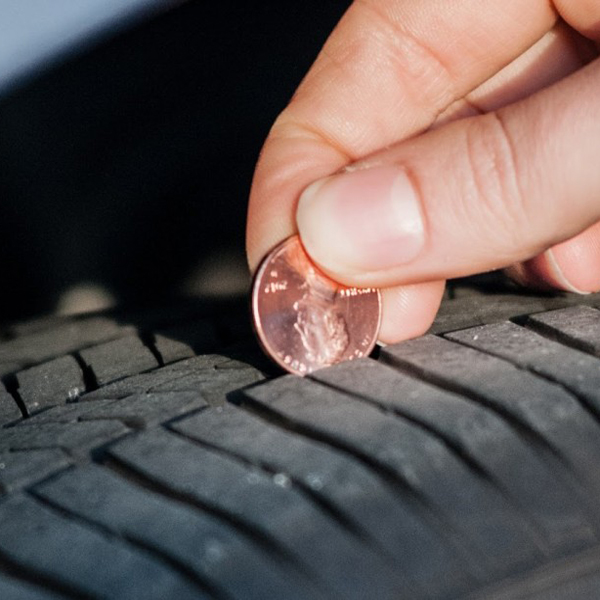 Dealers will replace worn tires with OE tires. This option can cost twice as much as going to the local store down the street.
Dealers will replace worn tires with OE tires. This option can cost twice as much as going to the local store down the street.
This local store, whether it's a national chain or a family run business, is probably the best place for the average consumer to buy new tires. Prices can be reasonable and a service manager will help buyers choose the right tire for their vehicle.
However, consumers should always shop for the best prices. Tire prices and fittings vary greatly from store to store.
Another option is a discount tire retailer. These wholesale tire distributors sell tires at huge discounts. In addition to low prices, they are often just a phone call or mouse click away.
© shutterstockNo matter where you buy your new tires, there are a few things to keep in mind:
-wide-guide.jpg) Don't buy passenger car tires if you want light truck tires.
Don't buy passenger car tires if you want light truck tires. Tire life depends on several factors, including:
tire manufacturer estimates.
The harder the road conditions, the faster your tire wears.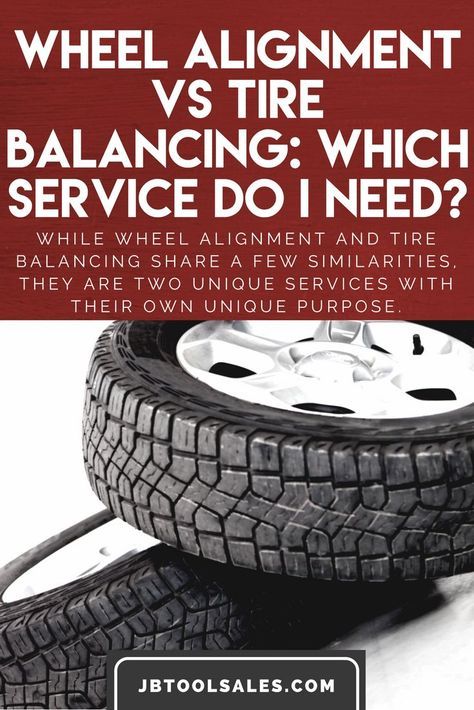
There are two pieces of data that will help you estimate how many miles you can expect from a set of tires: the tread wear rating and the tire's warranty mileage. The degree of tread wear is indicated as a number on the sidewall of the tire after the word "tread wear". The higher this number, the more likely the tire will last longer.
Take all your options and start reading reviews. See what the experts have to say about tires. Expensive tires don't always equal the best tires. Sometimes inexpensive tires wear out just as well as their premium competitors. But sometimes you get what you pay for.
The subscription service categorizes tires into categories such as braking, hydroplaning, tread life, ride comfort and more. But there are so many reviews available with a single click - google your car, tire brands, etc. When you read all the reviews, it will help you understand the differences, allow you to ask what you want, and hone in on buying tires.